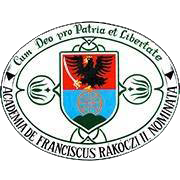Please use this identifier to cite or link to this item:
https://dspace.kmf.uz.ua/jspui/handle/123456789/3280| Title: | A kárpátaljai magyar óvodások számának várható alakulása 2018 és 2022 között |
| Other Titles: | Expected Evolution of the Number of Hungarian Speaking PreschoolAge Groups in Transcarpathia in the Near Future (2018-2022) |
| Authors: | Molnár József Молнар Йосип Ferenc Viktória Ференц Вікторія Molnár D. István Молнар Д. Стефан Stefan Molnar D. |
| Keywords: | Kárpátalja;magyar óvodások;óvodaválasztás |
| Issue Date: | 2019 |
| Publisher: | Bethlen Gábor Alapkezelő Zrt. |
| Type: | dc.type.researchStudy |
| Citation: | In Kisebbségi Szemle: a Nemzetpolitikai Kutatóintézet folyóirata. 2019. IV. évfolyam, 1. szám. pp. 49-70. |
| Series/Report no.: | A Nemzetpolitikai Kutatóintézet folyóirata;IV. évfolyam, 1. szám |
| Abstract: | A magyar nemzeti identitás egyik legfontosabb pillérét képező anyanyelvi oktatás fundamentumát
az óvodai képzés alapozza meg. Ennek szellemében nagyon fontos, hogy a
külhoni magyar régiókban a magyar szülők magyar tannyelvű óvodába írassák gyermekeiket,
és ennek nyomán a későbbiekben is magyar tannyelvű iskolai intézményt válasszanak.
Ukrajnában 2010-től minden ötödik életévét betöltő gyermek számára kötelezővé tették
az óvodai oktatást. Kárpátalján a vizsgálat ideje alatt (2017-ben) 112 óvodában működött
magyar nevelési nyelvű csoport, összesen 5916 gyermek részvételével. Abstract. Preschool education is the foundation of mother tongue education, and is one of the main pillars of national identity. Effective planning of the kindergarten network requires knowledge of the future development of the number of preschool age groups. The paper presents the results of the projection of the number of Hungarian speaking 3—5 year-olds in Transcarpathia in the 2018-2022 period. This data may determine the demographic basis of the Hungarian kindergarten network in the near future. The number of Hungarians, ethnically mixed Hungarian-Ukrainians, and Hungarian-speaking Gypsy children were counted separately, because the extent and possibilities of inclusion of the three groups in Hungarian kindergarten education differ. The study also includes the categorization of Transcarpathian settlements based on the quantitative and qualitative characteristics of the Hungarian-speaking kindergarten children living there. |
| URI: | https://dspace.kmf.uz.ua/jspui/handle/123456789/3280 |
| ISSN: | 2498-8049 |
| metadata.dc.rights.uri: | http://creativecommons.org/licenses/by-nc-nd/3.0/us/ |
| Appears in Collections: | Ferenc Viktória Molnár D. István Molnár József |
Files in This Item:
| File | Description | Size | Format | |
|---|---|---|---|---|
| Molnar_J_Ferenc_V_Molnar_D_I_A_karpataljai_magyar_ovodasok_szamanak_varhato_2019.pdf | In Kisebbségi Szemle: a Nemzetpolitikai Kutatóintézet folyóirata. 2019. IV. évfolyam, 1. szám. pp. 49-70. | 2.14 MB | Adobe PDF | View/Open |
This item is licensed under a Creative Commons License





